BLACK ART & CULTURE |
 | D.A.P.ISBN: 9781636810270
USD $100.00 | CAD $136 UK £ 79Pub Date: 9/14/2021
Active | In stock
|
|  | DABA/Koenig BooksISBN: 9781734681710
USD $45.00 | CAD $61Pub Date: 9/28/2021
Active | In stock
|
|  | The Museum of Modern Art, New YorkISBN: 9781633451100
USD $45.00 | CAD $61Pub Date: 10/12/2021
Active | In stock
|
|  | DelMonico BooksISBN: 9781636810027
USD $49.95 | CAD $75 UK £ 44.99Pub Date: 12/7/2021
Active | In stock
|
|
 | Skira/Jack Shainman GalleryISBN: 9788857241487
USD $25.00 | CAD $35Pub Date: 10/6/2020
Active | In stock
|
|  | Guggenheim MuseumISBN: 9780892075485
USD $29.95 | CAD $39.95 UK £ 24.95Pub Date: 7/23/2019
Active | In stock
|
| 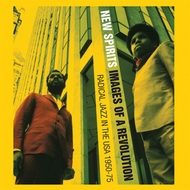 | Soul Jazz BooksISBN: 9780957260016
USD $49.95 | CAD $67.5Pub Date: 5/31/2014
Active | In stock
|
|  | Reel Art PressISBN: 9781909526822
USD $55.00 | CAD $85Pub Date: 12/21/2021
Active | In stock
|
|
 | Redstone PressISBN: 9781942884538
USD $39.95 | CAD $62 UK £ 32Pub Date: 10/29/2019
Active | In stock
|
| 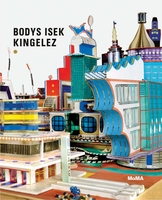 | The Museum of Modern Art, New YorkISBN: 9781633450547
USD $35.00 | CAD $47.5Pub Date: 5/22/2018
Active | In stock
|
|  | The Museum of Modern Art, New YorkISBN: 9781633450271
USD $26.95 | CAD $37Pub Date: 10/24/2017
Active | In stock
|
|  | Gregory R. Miller & Co.ISBN: 9781941366264
USD $55.00 | CAD $75 UK £ 50Pub Date: 11/26/2019
Active | In stock
|
|
 | Inventory PressISBN: 9781941753286
USD $19.95 | CAD $29.95 UK £ 17.5Pub Date: 11/26/2019
Active | In stock
|
|  | Steidl/The Gordon Parks Foundation/Carnegie Museum of ArtISBN: 9783969990056
USD $65.00 | CAD $88Pub Date: 6/28/2022
Active | In stock
|
| 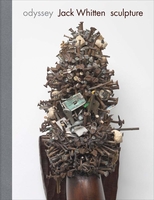 | Gregory R. Miller & Co.ISBN: 9781941366172
USD $55.00 | CAD $72.5 UK £ 50Pub Date: 6/12/2018
Active | In stock
|
|  | The Museum of Modern Art, New YorkISBN: 9781633450400
USD $39.95 | CAD $59.95Pub Date: 2/28/2017
Active | In stock
|
|
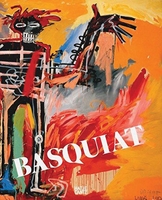 | Hatje CantzISBN: 9783775725934
USD $65.00 | CAD $87Pub Date: 11/30/2010
Active | In stock
|
|  | SkiraISBN: 9788876242649
USD $65.00 | CAD $85Pub Date: 7/12/2005
Active | In stock
|
|  | Eakins Press FoundationISBN: 9780871300713
USD $45.00 | CAD $55 UK £ 40Pub Date: 9/15/2015
Active | In stock
|
|  | National Portrait GalleryISBN: 9781855147119
USD $49.95 | CAD $67.5Pub Date: 8/28/2018
Active | In stock
|
|
 | Reel Art PressISBN: 9781909526389
USD $49.95 | CAD $67.5Pub Date: 8/23/2016
Active | In stock
|
|  | DamianiISBN: 9788862087520
USD $55.00 | CAD $75Pub Date: 11/30/2021
Active | In stock
|
|  | Edition Patrick FreyISBN: 9783907236239
USD $70.00 | CAD $101.5Pub Date: 11/7/2023
Active | In stock
|
| 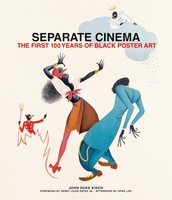 | Reel Art PressISBN: 9781909526068
USD $55.00 | CAD $85Pub Date: 10/6/2014
Active | In stock
|
|
 | HENI PublishingISBN: 9781912122271
USD $45.00 | CAD $62Pub Date: 4/7/2020
Active | In stock
|
|  | skiraISBN: 9788857244815
USD $40.00 | CAD $56Pub Date: 3/22/2022
Active | In stock
|
|  | Steidl/The Art Institute of ChicagoISBN: 9783958294004
USD $40.00 | CAD $54Pub Date: 6/26/2018
Active | In stock
|
|  | D.A.P.ISBN: 9781942884170
USD $50.00 | CAD $70Pub Date: 9/26/2017
Active | In stock
|
|
 | Testify BooksISBN: 9781732062917
USD $60.00 | CAD $80 UK £ 50Pub Date: 11/16/2021
Active | In stock
|
|  | Gregory R. Miller & Co.ISBN: 9781941366325
USD $39.95 | CAD $55.95 UK £ 34.99Pub Date: 6/1/2021
Active | In stock
|
|  | Badlands UnlimitedISBN: 9781943263141
USD $19.99 | CAD $27.95Pub Date: 5/22/2018
Active | In stock
|
| 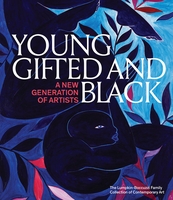 | D.A.P.ISBN: 9781942884590
USD $49.95 | CAD $69.95 UK £ 45Pub Date: 9/22/2020
Active | In stock
|
|